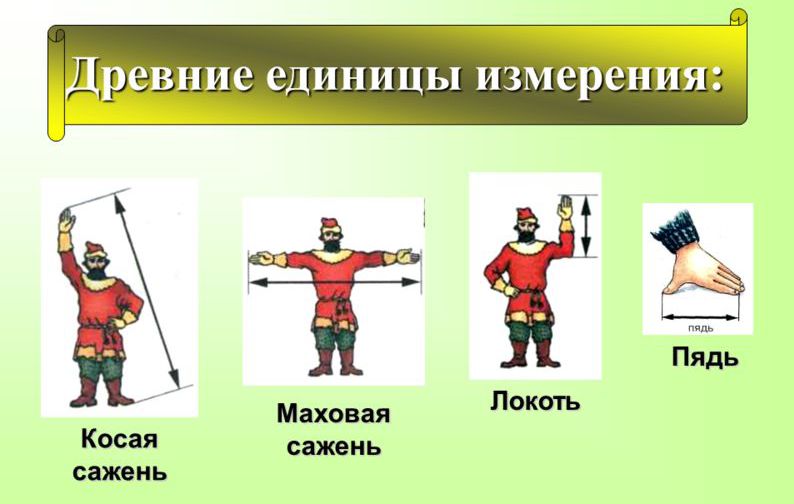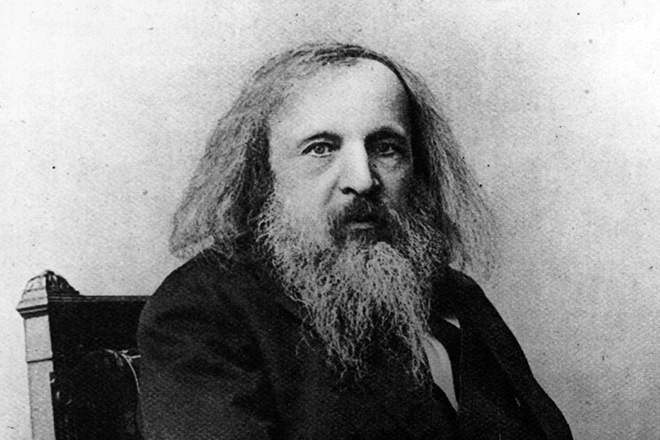Without exact sciences, technological progress is impossible. Research in one area is used in almost all areas of modern life. It's about metrology.
The history of the development of metrology dates back to ancient Egypt. The then desire of the Egyptians to standardize the size of building materials formed the basis of the modern scientific industry. By the way, not only they made attempts to create the same objects. For example, most world-famous monuments of Greek architecture were built from standard elements. The principle of standardization is also found in the Roman Empire. In the history of metrology, the construction of water pipes using pipes of the same size is noted.
In the era of ubiquitous handicraft, uniform standards began to be found in almost every business. The history of metrology, standardization and certification actively developed during the Middle Ages. For example, for weavers and tailors, specific sizes of materials, the number of threads in the warp, general requirements for the quality of raw materials, etc. were established.
How science developed in foreign countries
There are practically no concrete data on the development of metrology and the history of metrology until the second half of the 19th century. They started talking about metrology as an independent scientific field only from the middle of the century before last. At that time, work on standardization was already carried out at all production enterprises.
By bringing the work process to uniform standards, it was possible to achieve the main goal pursued by entrepreneurs - increasing the level of profitability. Internal factory standardization went through the stages of formation, first at first within separate workshops, enterprises, but soon it acquired a comprehensive character.
At the end of the 19th century, the history of the development of metrology and standardization already went beyond national perception. Industrial unification has become increasingly important at the international level. The most striking examples are the following:
- Standard Whitworth thread. It was first introduced in 1891 in England, after which the inch dimensions of steel were also applied in other countries. The replacement of the Whitworth metric thread also took place synchronously in most European countries.
- Track gauge. Common parameters were proposed by the Germans in 1846. Along with the gauge, standardized towing devices for wagons have been developed.
- Rolled iron. A directory with the sizes of standard sheets of metal profiles was published in Germany in 1869.
- Brick. In 1870, most European countries adopted the standard dimensions of building bricks.

Despite the fact that these were the first results of standardization in the history of the development of world metrology, they were of considerable practical importance for strengthening the industrial forces of each of the states that adopted these norms. Thanks to the manifestations of typing, the first signs of a system, orderliness, and integrity began to appear in the world. For example, in Germany alone there were many types of measurements, and each region could have a separate measure of weight, length, height, speed, etc. With the history of the development of standardization and metrology, a single measurement system has appeared here.
Units in the past
These criteria were set symbolically. So, for example, the unit of length “foot”, widespread in European countries, was equated to the foot length of Charlemagne, and the “elbow” corresponded to the length of the scepter of King Henry I. At the same time, the search for more optimal units of measure did not stop.
The “meter”, known and used today as a unit of length, was first heard in France, back in 1790. Meanwhile, only 17 countries agreed to accept this measure of length only after 85 years. The signing of the Metric Convention and the formation of the International Bureau of Weights and Measures have become an important step in the development of metrology. The history of scientific and technological progress is an integral part of the development of standardization.
At the end of the 19th century, significant successes were achieved in the creation of technology, the strengthening of the position of industrial sectors and the concentration of production enterprises. Against the backdrop of the prosperity of metrology in technically developed countries, the desire for organized standardization, which most often culminated in the formation of local government agencies dealing with this issue, naturally arose. A striking example is the British Standards Committee, created in 1901. His main task was to ensure the growth of economic power of England through the preparation, adoption and implementation of universal standards for raw materials, industrial equipment, military equipment.
Metrology in wartime
The intensive militarization of numerous powers at the beginning of the last century needed to increase the rate of production of weapons, militaristic equipment and ammunition. Moreover, compliance with the principles of universality and interchangeability was extremely important at that time. Without the introduction of common standards, this task could remain unresolved - this is the main reason for the rapid rise in metrology.
The history of metrology has gone through a new global stage. During the First World War and after its end, state standardization organizations were created in the Netherlands, Germany, France, Switzerland, Japan and the USA. Then the science of metrology was treated as an instrument for the implementation of an expedient economic breakthrough. Following these countries, national structures were formed in Belgium and Canada, Austria, Italy, Hungary, Australia, Sweden, Poland and several other European powers.
A brief history of the development of metrology at the beginning of the twentieth century is inextricably linked with monopoly capitalism, as a result of which the standardization institutions have acquired an international scale. With the constant expansion of interstate trade, the need arose for closer cooperation in scientific and technical fields, which served as the reason for the founding of the New York International Association for Standardization (ISA). At the beginning of World War II, its work was suspended, and in 1943 a Coordinating Committee for Standardization was formed. Three years later, the two organizations were merged into the International Organization for Standardization (ISO). Its participants were 33 states. At the moment, ISO is the largest and most respected international scientific and technical organization, whose members are more than 90 modern powers.
Other international organizations
In addition to ISO, other national and intergovernmental organizations are involved in standardization issues . An example is the European Coal and Steel Association, which was formed in 1953. No less famous from the history of the development of metrology, standardization and certification is the Steering Committee for Steel - this organization develops industry standards for the countries of the European Union.
In March 1961, during the Paris meeting, which was attended by representatives of national organizations for standardization of European countries, a Committee for European Coordination of Standards was formed. His tasks included the development of common metric units and production and technical measurements for the participating states. The Committee includes many working groups, which are divided into various industrial sectors (metallurgy, construction, textile production, mechanical engineering, ship and aircraft building, oil and gas production, etc.).
The first standards in Russia
Some units of measure from the history of Russian metrology are of anthropological origin, since scientists associate it with the peculiarities of human labor. For example, residents of Kievan Rus used these types of measurements:
- Top - meant the top of the finger (finger). This measure of length involved the use of the length of the upper phalanx of the index finger.
- Span - the word came from “five”, “five”. This is the distance between the end of the extended index finger and thumb.
- Elbow - this is the name that had the distance from the elbow to the end of the middle finger.
- Fathom - the origin of this word is associated with the verb "to encroach", "to reach." This old Russian unit of distance was the main measure of length since 1649 and was equal to 2 meters 16 cm. During the reign of Nicholas I, the length of the fathom was changed and equated to seven English feet.
- Versta is a measure of length equal to five hundred fathoms. In the modern measurement system, one mile is the distance of almost 1067 meters.

These length measures came out of use after the introduction of the national metric system in the USSR. Mention of any government bodies involved in standardization is not in the history of metrology. In the Tver province, for example, the role of the metrological service was partially taken over by monasteries and churches, which used and stored standard measuring instruments of those times. However, there is no official confirmation of this information.
The rise of standardization in the pre-imperial period
The first official information from the history of metrology in Russia relates to the years of the reign of Tsar Ivan the Terrible. In the middle of the XVI century, by special decree of the ruler, the standard sizes of cannonballs were adopted. The royal decree also defined calibers to confirm these sizes. The document regulated the rules for the storage of ammunition, methods of transferring the previous measure of the volume of bulk bodies in accordance with the new requirements. The model units were photocopied and stored in centralized vaults. All this allows us to talk about the system of unity of measurements and state metrology operating under Tsar Ivan the Terrible.
The history of the development of metrology in the mid-17th century is reflected in the Articles of the Council Code, as well as in the Customs and Novotrade charters. Among all standardizing documents, these were the most significant, since they established the conformity of old Russian measures to the British pound. Metropolitan decrees, implying the introduction of a common measurement system in the country, were sent to counties and provinces at the same time as control samples, for whose intentional damage they would face severe punishment, even the death penalty was not excluded.
The supervisory authorities that monitored the execution of the decree and carried out inspections appointed two Moscow institutions - the so-called Pomerannaya Izba and the Big Customs. These structures were also involved in resolving disputes and conflicts arising in the course of trade operations. In the peripheral part of the state, control over the observance of the decree was entrusted to the governors and the staff of the zemstvo huts, and to the elders.
Standards in the Russian Empire of Peter the Great
From this moment begins a completely different stage in the history of metrology. The creation of tables of measures that clearly demonstrate the relationship between Russian and foreign units of measurement served as a powerful impetus to the development of imperial standardization. An important role in the development of the scientific and practical component of metrology was played by the permission of Peter I to apply in Russia the measures of weight and length used by the British (feet, inches). They gained especially wide popularity in the Navy and in shipbuilding.
The issues of the unity of measures and standardized services in the production and trade sphere were entrusted to the Commerce College. Admiralty colleges were given new functions, which now had to take care of the correct use of goniometers, measures, compasses and other devices. The Berg collegium was engaged in the measurement of borders for the extraction of raw materials used in the mining industry, coinage, etc.
Of great importance in the history and development of the science of metrology was the St. Petersburg Academy of Sciences. The institution, founded in 1725, expanded the scope of activities and began to standardize time periods, angular units, and temperature indicators. The research institution had at its disposal all the necessary samples, in particular, standard copies of the pound.
Gradually, a need arose in the state to create a centralized management center coordinating metrology and standardization issues throughout the country. Such was the Commission of Weights and Measures in 1736. Its chairman was the former head of the Mint - Count M. Golovkin, and L. Euler became his right hand. The initial measure of the length of the commission determined the wood fathom and copper arshin, and a bucket was taken as a liquid measuring device. A significant step in the work of the Commission was the establishment of the Russian model pound. The activity of the structure lasted more than 11 years. An equally important result of the Commission's work was the production of bronze weights covered with gilding - the product acquired the status of a legalized state standard in measuring weight in Russia. This pound, corresponding to the weight of the kettlebell, remained the only model in the country for several decades.
A new history of the formation of metrology in Russia
The imperial decree of 1835, which determined the system of measure and weight in the Russian Empire, approved the standards of mass and length. These included platinum fathom, equivalent to seven feet of the British, a platinum pound that did not differ in weight from a bronze gilded analogue.
Many metrologists associate the year 1842 with the actual occurrence of metrology in Russia. The history of science in its modern sense takes its count from the opening of the first centralized institution on the territory of the Peter and Paul Fortress - the Depot of exemplary measures and weights. The building of this state body was distinguished by an increased level of security. According to builders, the Depot was not afraid of any fires. Not only reference originals and samples of foreign measures of length and weight were stored here, but also copies were made for local use, verification and comparison of domestic originals with foreign ones was carried out. At the moment, template products are stored in the St. Petersburg Museum of D. I. Mendeleev. Depot activity was regulated by a special provision adopted in the same 1842. The document laid the foundations for standardization and ensuring equally accurate measurements.
By the way, this period in the history of the science of metrology is described in detail in the capital work of Petrushevsky, which is called "General Metrology". The book was published in 1849 and was awarded the Demidov Prize of the Imperial Academy of Sciences.
Metrology Mendeleev
Tangible progress in the scientific development of standardization occurred during the management of the Depot by D. I. Mendeleev. The scientist who made a huge scientific contribution to domestic physics, chemistry, economics, geology and instrumentation, managed to bring work in the organization to a new level.
In 1893, the Depot of Model Weights and Measures was reorganized into the Main Chamber of Weights and Measures. This structure has acquired the official status of one of the first metrological research institutions in the world. Under the direction of D. I. Mendeleev, a huge amount of work was done to create the Russian system of standards and their relationship with foreign metric parameters. Mendeleev in the history of the emergence of metrology contributed to the implementation of broad research programs in the field of standardization. Moreover, scientific work on the metrology of the scientist himself has not lost its relevance today. It is no accident that Dmitry Ivanovich adhered to the principles in accordance with which science begins when a unit of measure takes place.

The scientific credo of Mendeleev today determines the role and place of mathematics, physics, chemistry, metrology in the system of natural sciences. It was Mendeleev who laid the correct orientation vector for studying standardization issues, formed a style of research and practice that was atypical until then, which for many years determined the directions for the development of domestic metrology, providing it with credibility in the international arena.
But even Mendeleev failed to achieve the full-fledged introduction in Russia of a convenient and unified metric system. At a time when the Depot of exemplary measures and weights was headed by a scientist, reference measures were used only partially, in parallel with outdated inch systems. This state of affairs interfered with the normal development of production, slowed down and complicated the industrial, foreign economic and scientific-technical developments. And if in St. Petersburg new systems were used everywhere, then in the provincial regions there could be no talk of an actual breakthrough in the history of metrology. In Tver province, as well as in Kursk, Tambov and Voronezh, the first tents with weights and dimensional copies were opened after the death of Mendeleev.
The initial stage of development of modern standardization
Tangible changes in the field of standardization and metrology occurred after the coup. The Council of People's Commissars gave legal force to the decree, which in fact implied the mandatory introduction of the International Metric System of Weights and Measures since 1918.
The next decade was devoted to the real implementation of a set of measures and the implementation of measures to establish a state metrological body. Since in the conditions of the Civil War, famine and devastation it was rather difficult to control the implementation of the Decree, a compulsory all-Russian verification of measures was introduced, the provisions on the Main Chamber of weights and measures were changed, fixed fees for verification fees appeared, etc. In the process of metrological reform, the Bolsheviks:
- developed, manufactured and replaced tens of millions of weights and linear measures;
- created a network of testing institutions in every Soviet city, which made available their branding and verification;
- Provided initial reference facilities to equip each institution
- We worked through the entire technical workflow, reorganized the measuring departments of industrial enterprises, and set up the production process of tools;
- They promoted the metric system, trained the population to use it through the publication of fact-finding brochures and manuals.
The role of standardization in the second half of the last century
The Great Patriotic War confirmed a decent level of metrological support in the engineering and technical sectors and the economic sphere of the Soviet Union. The relocation and change of the production profile of many industrial enterprises caused by the transfer to military rails was associated with a change in the entire product range. But despite the globality and lightning speed of change, significant violations in the system of measurement uniformity and interchangeability did not arise.
In the post-war period, the State Standardization System (GSS) was created and launched, which underwent repeated transformations, but remains valid to this day. Within the framework of the GSS, a number of organizational principles and conditions are governed by the structure of the metrological service and the USSR State Standard. By 1973, meteorologists had about 250 territorial representations and institutes with a centralized administration of Gosstandart in each of the socialist republics.

A significant event in the history of the creation of metrology in modern Russia was the adoption of the Federal Law "On Standardization" in 1993. This document has established ways to protect the interests of consumers by designing and implementing GOSTs. With the acquisition of legal force by this legislative act, the transition from mandatory compliance with the standards established by the USSR regulations to partially recommended requirements. This trend has existed for exactly 10 years. In 2003, the transition to a voluntary standardization system began. The adoption of this document led to the beginning of the process of restructuring the current standardization system, which prevented Russia from joining the WTO and did not allow removing technical barriers in production.
The measurement system in the history of metrology has undergone a lot of changes, but, despite all the difficulties that accompanied the different periods of the formation of this scientific branch, the use of a standardized system played a decisive role in the development of national and international metrological institutes.